This article was medically reviewed by Luba Lee, FNP-BC, MS. Luba Lee, FNP-BC is a Board-Certified Family Nurse Practitioner (FNP) and educator in Tennessee with over a decade of clinical experience. Luba has certifications in Pediatric Advanced Life Support (PALS), Emergency Medicine, Advanced Cardiac Life Support (ACLS), Team Building, and Critical Care Nursing. She received her Master of Science in Nursing (MSN) from the University of Tennessee in 2006.
There are 10 references cited in this article, which can be found at the bottom of the page.
This article has been viewed 1,045,914 times.
Fainting, or syncope, is a scary experience. It is often the result of poor circulation to the brain which then causes you to lose consciousness and pass out. However, you can take certain precautions to make sure that are you safe if you faint. Watch carefully for any initial signs, such as feeling dizzy. Then, sit or lie down right away. Get help from others and take your time recovering after an episode. Working with your doctor to determine a treatment plan will help as well.[1]
Steps
Taking Action During the Initial Symptoms
-
1Watch for dizziness. You might feel a slight, or severe, dizzy spell immediately before you faint. This is a strong warning sign that your circulation system is not functioning normally. As soon as you start to feel dizzy at all, stop what you are doing and try to get lower to the ground via sitting or lying down.[2]
-
2Watch for changes in vision and hearing. Your senses will most likely be affected as well in the minutes right before you faint. You may experience tunnel vision or feeling as if your vision is collapsing into one small tunnel to look through. You may see spots or blurs. Your ears might start to ring or feel as if they are giving off a slight buzz.
- Other major symptoms include a clammy and pale face, numbness in your face and exterior limbs, feelings of severe anxiety, or sudden onset nausea or stomach pains.
Advertisement -
3Sit or lie down immediately. When you experience any symptoms related to fainting, the goal is to get as low as possible as quickly as you can. Many people receive serious injuries not from the fainting, but from the fall to the ground connected with the loss of consciousness. It is best to lie down on your back or side, but if that is not an option it is okay just to sit down.
- When you lie down it puts your head at roughly the same level as your heart and encourages circulation to be restored and your blood to head back to your brain easier. If you are pregnant you should lie down (and usually sleep as well) on your left side to lessen the burden on your heart.
- If the area is crowded, for example, and it is only safe to sit down that can work as well. For maximum benefit, hang your head between your legs. This will encourage the blood to follow gravity and head back down into your brain.[3]
-
4Get yourself some space. If you are in a crowded area it is probably best to touch a wall and slowly try to lean yourself against it. If needed, you may slide yourself slowly down the wall. This will prevent you from being trampled while you are on the ground. Getting away from the crowd might also lower your temperature and make breathing easier.
-
5Try to fall against a wall. If it is too late to lie down in a controlled way, then you will want to control the direction of your fall as much as you can. As you begin to lose consciousness, do your best to angle your body towards a wall if there is one within arm’s reach. This will allow you to slide down the wall instead of going into a free fall.
- You can also make an effort to buckle your knees. This will have the effect of lowering you to the ground and will lessen your final fall.
-
6Be very careful on stairs. If you are on stairs and the symptoms start to appear, move from the inner rail to the outer one connected to a wall. Sit down on a stair. If you are close to a landing, try to scoot down on your behind to it where you can then lie down.
- If you feel yourself going down before you can sit, try your best to maintain a firm grip on the rail. It can help to guide you down to the floor even as you lose consciousness. If nothing else, draping your body partially over the outer rail (against the wall) will slow the course of your fall and turn it into a slide down.
-
7Ask someone for help. Call out for assistance using your voice. If your voice isn’t working properly, wave your hands in the air and mouth out the word “help” repeatedly. Be careful trying to walk towards someone to get help as you could go down mid-step.
- If you see someone you might say, “Help! I’m about to pass out!” Or, “Can you help me? I think I’m going to faint.” Don’t be afraid to approach strangers who may be able to help you stay safe.
- If you are lucky and someone helps you, they should start by assisting you to the floor if you are not there already. If you do fall and injure yourself, they should apply pressure to the bleeding area and call for medical assistance.[4]
- The person assisting should also remove any tight clothing that could be constricting blood flow to your head, such as tight neckties.[5] They will need to make sure your airway is clear and stays that way. It may be necessary to tilt you to the side if you begin vomiting. They should check for signs that you are breathing properly, even when unconscious. If anything looks concerning, they should dial for emergency assistance immediately and wait until help arrives.
Recovering Immediately After an Episode
-
1Stay on the ground for a bit. Don’t be in a rush to get up after a fainting spell. Your body and mind need time to recover. You should stay in your current position on the ground for at least 10-15 minutes. If you get up too soon you risk triggering another episode.[6]
-
2Prop your feet up, if you can. Simple fainting episodes are usually resolved by rapidly elevating the person’s feet and legs. While you are on the ground see if it possible to elevate your feet at all. Making it so that they are higher than your head is best, but an elevation will help. If you are lying down, see if you (or your helper) can stuff a jacket under your feet. This will improve the blood flow to your head and speed up the healing process.
-
3Take a deep breath. While you are waiting to stand again, inhale a series of deep, calming breaths. Fill your lungs to full capacity by breathing through your nose and then slowly release the air via your mouth. If you are still in a stuffy or hot area, you will want to carefully monitor your breathing until you can safely walk to a better space.
-
4Drink plenty of fluids. One possible cause of fainting is dehydration. So, to prevent another episode, you will want to drinks lots of water immediately after standing and for the remainder of the day. Be very wary of drinking alcohol after a fainting spell as it will dehydrate you only further, thus adding to the initial problem.[7]
-
5Eat multiple small meals throughout the day. Eating more frequently and avoiding skipping meals may help to prevent you from fainting. Try eating five to six small meals per day instead of two or three large meals.
-
6Avoid drinking alcohol. Alcohol can increase your risk of fainting, so it is best to avoid it if you are prone to fainting. If you do drink, make sure that you only drink in moderation, which is no more than one drink per day for women of all ages and men over 65, and no more than two drinks per day for men under 65.[8]
-
7Pay attention to your medications. Some medications may cause dizziness and fainting. Consult your medical provider about which medications may cause these symptoms. Some blood pressure medications may even be taken at bedtime to prevent fainting.
-
8Go slow for the rest of the day. Recognize that your body needs time to recover and give yourself a bit of a break for the remainder of the day. Make sure to walk slowly and carefully. It is probably best to avoid exercise for the next 24 hours or so. Try to minimize your stress by putting off important tasks until tomorrow.
- Do something that you know relaxes you, such as going home and taking a bubble bath. Or, sitting on the couch and watching a bit of football.
-
9Call for emergency assistance, if needed. If you wake from the faint and still feel other symptoms such as shortness of breath or chest pain, you or your caretaker should immediately call for emergency medical help. These are signs that you may have a more serious health condition and you will most likely need to be evaluated at the hospital.[9]
Protecting Yourself in the Future
-
1Talk with your doctor. Whether this is your first episode or one in a series, it is a good idea to make an appointment with your doctor to talk over what you experienced. They will decide if any additional action is necessary and this will give you peace of mind moving forward. They might also ask you to watch for particular warning signs, in addition to fainting, such as increased thirst.
- Your doctor may order tests such as a blood sugar draw, a general blood test to check for anemia and nutrient levels, and an EKG (to scan for heart issues). These are all fairly standard diagnostic tools.[10]
- Your doctor may also place restrictions on your behaviors until the cause of fainting has been established and treated. They may request that you limit your driving and avoid operating any kind of heavy or complex machinery.[11]
- It is helpful if you can bring with you a statement or brief note from someone who witnessed you faint. After all, you were unconscious for part of this time and this person call “fill in the blanks” regarding what happened to you.[12]
-
2Take preventative medication. There is a possibility that your doctor will prescribe medication to you to treat and prevent future fainting episodes. These medications usually address the underlying cause of the fainting. For example, corticosteroids are drugs that help to boost hydration via the elevation of sodium levels.[13]
- Make sure to follow the exact directions on any medication that you receive. If you fail to do so, you run the risk of your fainting spells getting worse.
-
3Stay hydrated and full. This is good advice in general but is especially helpful if you’ve fainted in the past. Carry small snacks with you that are high in sugar and salt. For example, drink some juice or eat some mixed nuts. This will to help to prevent your blood sugar from dropping too low, a common cause of fainting.[14]
-
4Take supplements or herbs. Focus on substances that will improve circulation and heart health overall. Omega-3 fatty acid supplements are good in that they minimize inflammation allowing your blood to circulation more efficiently. You can also focus on herbal remedies, such as green tea, also praised for its anti-inflammatory properties.
- Carefully discuss all herbs and supplements with your doctor to ensure that they do not interfere with your current medications or possess problematic side effects.
-
5Wear a medical ID bracelet. You’ve probably seen these before and they are easy to order from your doctor or even online. A medical ID, certificate, or card includes your name, medical status, emergency contact information, and known allergens. This is an especially good idea if you suffer from frequent fainting episodes or if you plan to travel.[15]
-
6Embrace relaxation techniques. Fainting can also result from emotional events or stress. Learn to control your body’s reaction by practicing deep breathing techniques. Enroll in a yoga or meditation class to learn the methods that are best suited for you. Some even suggest hypnosis as a way to lower overall stress levels and regulate blood pressure.
-
7Wear elastic stockings. These can help with circulation by improving blood flow from your legs back up to your heart and brain. However avoid wearing girdles, garters or other constricting garments that may decrease venous return.
-
8Change positions slowly. Rising too quickly from a seated or lying position may lead to fainting. Try to transition from one position to another slowly to help prevent fainting.
- For example, sit up on the edge of the bed in the morning before standing up.
-
9Keep your blood circulating. Make a habit of periodically flexing your leg muscles or wiggling your toes when standing or sitting for periods of time. This will help to improve your circulation allowing your heart to work a bit less. Even swaying slightly from side-to-side will help when standing.[16]
- You can also wear pressure stockings that encourage the blood to move from your lower extremities up into your upper body and head.[17]
-
10Avoid situations that trigger episodes. Each time that you faint consider the underlying causes in consultation with your doctor. You may need to avoid seeing blood or perhaps overheating is the issue. Standing for long periods might be the problem for you. Or, perhaps you get overwhelmed with fear and pass out. When you know what triggers your fainting you can actively work to avoid those situations.[18]
Warnings
- If you are driving when you start to feel faint, pull over to a safe place.⧼thumbs_response⧽
References
- ↑ http://www.health.harvard.edu/family-health-guide/when-the-lights-suddenly-go-out
- ↑ http://kidshealth.org/en/teens/fainting.html#
- ↑ http://news.health.com/2015/12/30/5-things-that-can-make-you-faint/
- ↑ http://www.mayoclinic.org/first-aid/first-aid-fainting/basics/art-20056606
- ↑ https://medlineplus.gov/ency/article/003092.htm
- ↑ http://kidshealth.org/en/teens/fainting.html#
- ↑ http://www.huffingtonpost.com/entry/should-you-go-to-the-doctor-after-fainting_us_577d7a7ae4b0344d514ddb1d
- ↑ http://www.mayoclinic.org/healthy-lifestyle/nutrition-and-healthy-eating/in-depth/alcohol/art-20044551
- ↑ http://kidshealth.org/en/teens/fainting.html#
- ↑ http://kidshealth.org/en/teens/fainting.html#
- ↑ http://www.merckmanuals.com/home/heart-and-blood-vessel-disorders/symptoms-of-heart-and-blood-vessel-disorders/fainting
- ↑ http://www.merckmanuals.com/home/heart-and-blood-vessel-disorders/symptoms-of-heart-and-blood-vessel-disorders/fainting
- ↑ http://www.saintlukeshealthsystem.org/health-library/vasovagal-syncope
- ↑ http://www.health.harvard.edu/family-health-guide/when-the-lights-suddenly-go-out
- ↑ http://www.travelinsurancereview.net/tips-and-advice/travel-safety-tips/safe-travel-with-a-medical-condition/
- ↑ http://www.huffingtonpost.com/entry/should-you-go-to-the-doctor-after-fainting_us_577d7a7ae4b0344d514ddb1d
- ↑ http://www.health.harvard.edu/family-health-guide/when-the-lights-suddenly-go-out
- ↑ http://news.health.com/2015/12/30/5-things-that-can-make-you-faint/
About This Article
To faint safely, try to sit or lie down as soon as you notice symptoms like dizziness, tunnel vision, or ringing ears. If you feel yourself losing consciousness before you can sit down, try to fall against a wall so you’ll slide down it and avoid a heavy impact. You can also ask for help from any bystanders by saying, “Help. I’m about to faint,” or waving your arms to get their attention. If you think you’re about to faint while on stairs, hold onto the rail and lower yourself to a sitting position to avoid a nasty fall. For more tips from our Medical co-author, including how to recover right after fainting, read on!

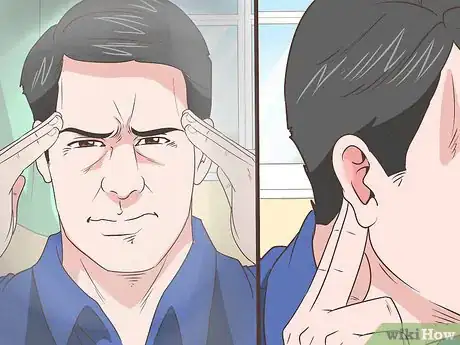
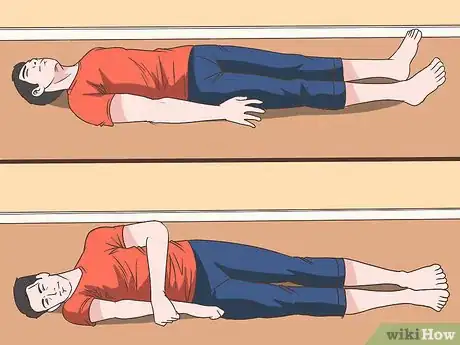

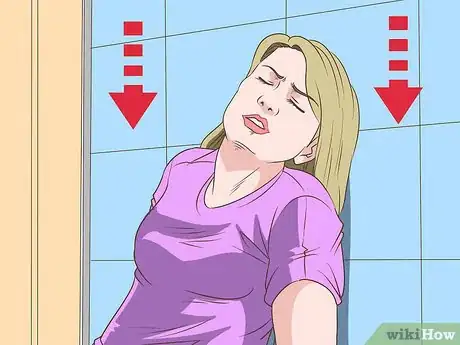

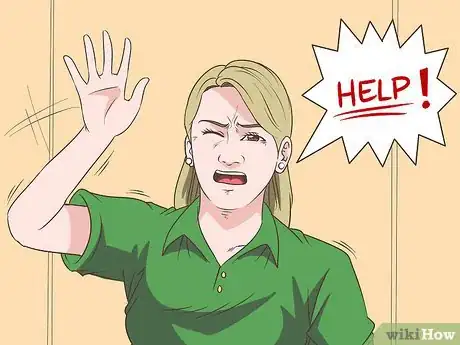
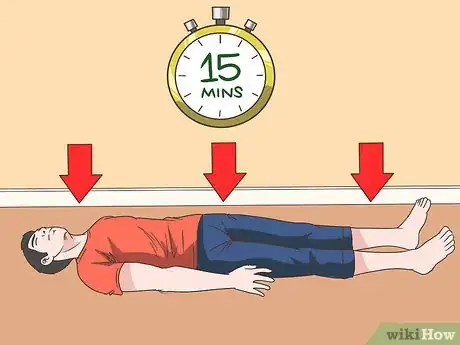
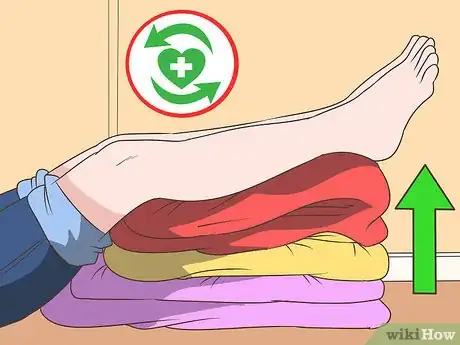


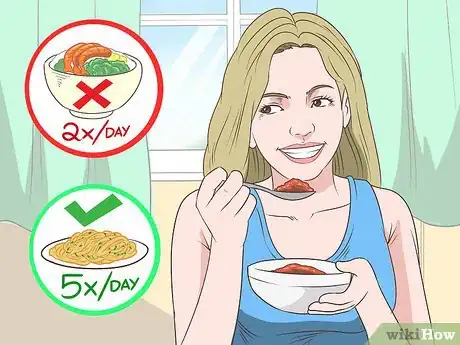

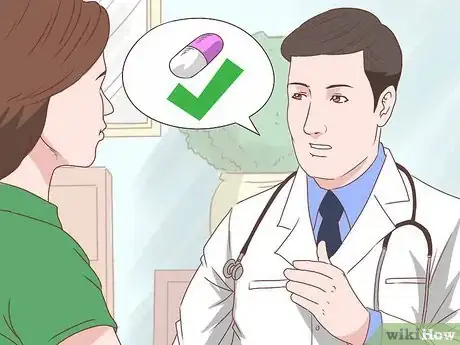
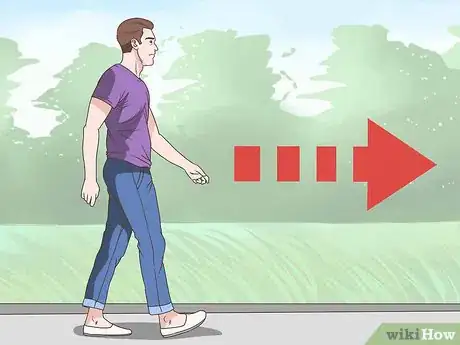


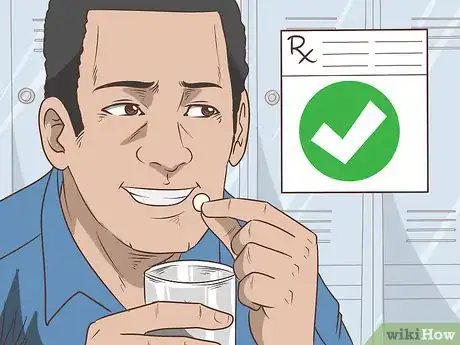
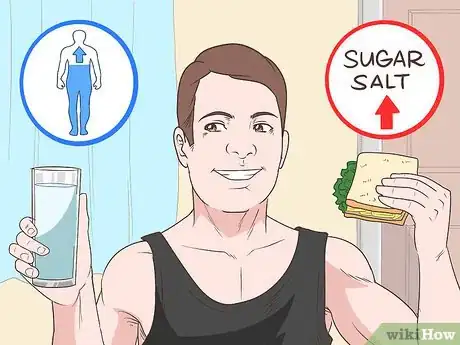

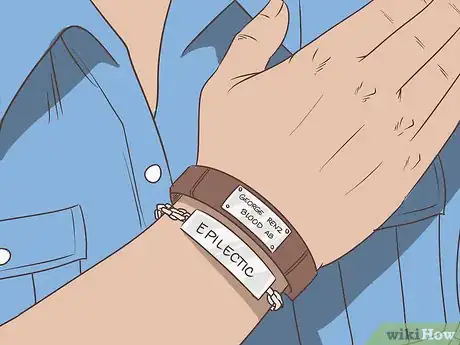



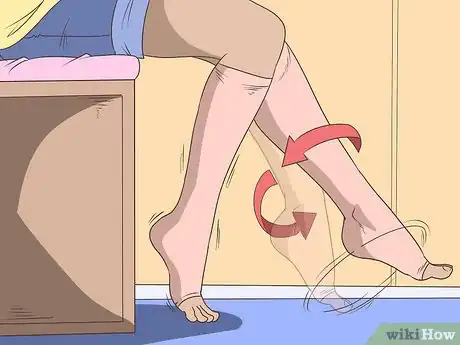
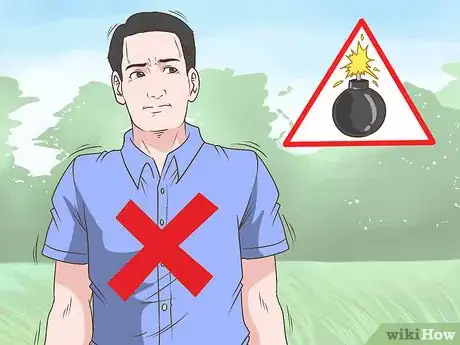

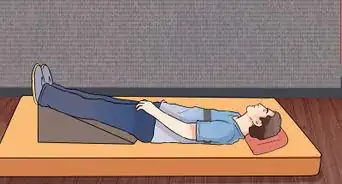


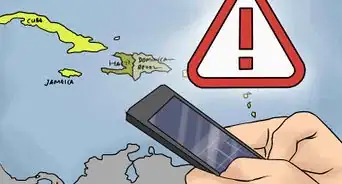
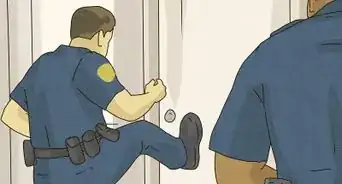


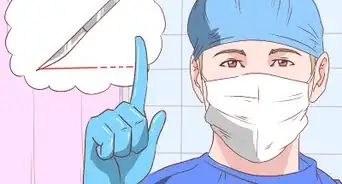

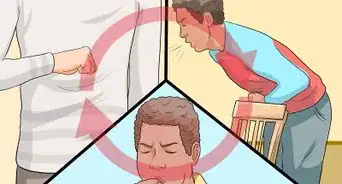












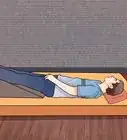
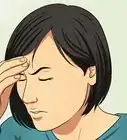




































Medical Disclaimer
The content of this article is not intended to be a substitute for professional medical advice, examination, diagnosis, or treatment. You should always contact your doctor or other qualified healthcare professional before starting, changing, or stopping any kind of health treatment.
Read More...